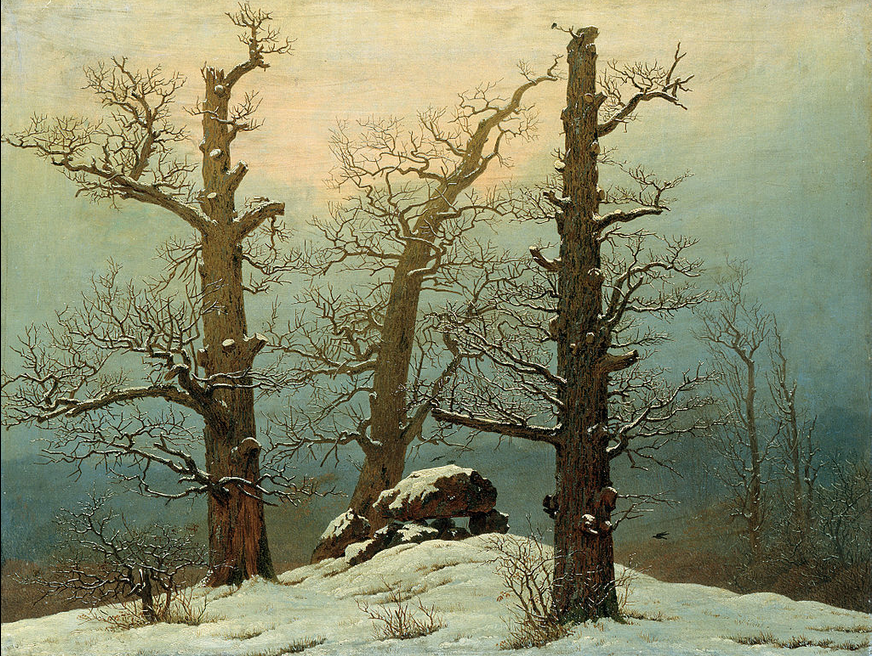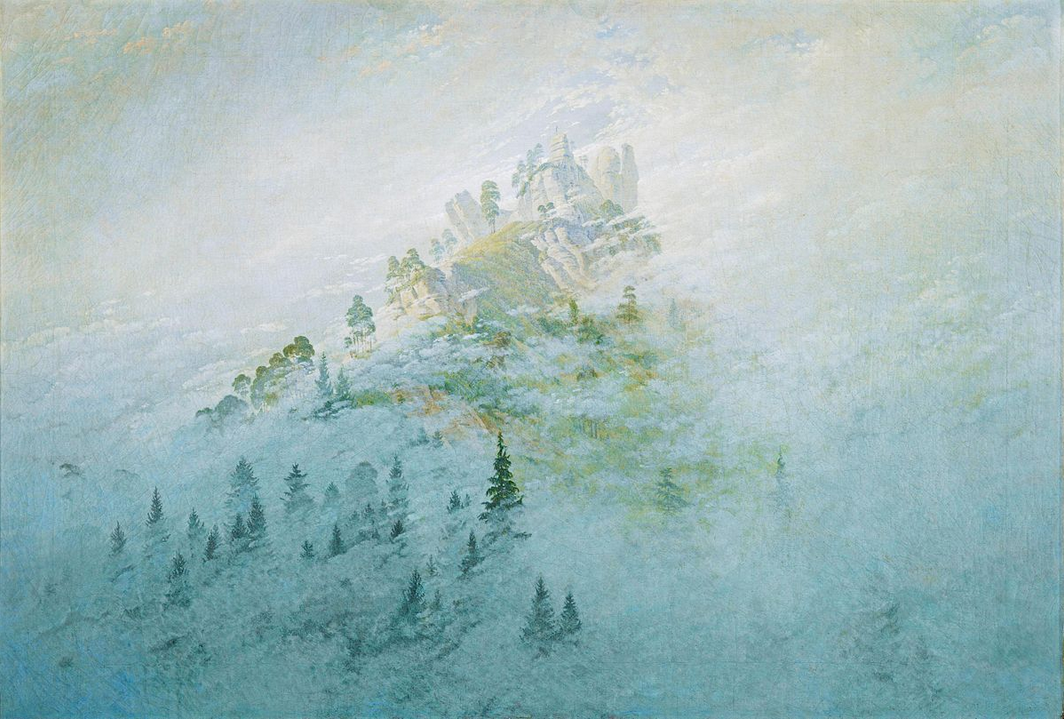The plan is to keep with the winter themed landscape artists until the Spring Equinox.
This week’s artist has a different approach which you may see in his work. Caspar David Freidrich was considered the most iconic German Romantic landscape painter.
He was born in 1774 in Swedish Pomerania, moving later to Copenhagen and Dresden. He studied art, literature and aesthetics and was imbued with a teaching to look at the world from two perspectives: the inner spiritual eye and the outer physical eye. German literature and music had been undergoing a movement called “Sturm und Drang” (Storm and Stress) in which emotions were given free expression after being so contained by the mental rationalism of the Enlightenment. Mood would become a defining element of the Romantic period.
Frederich had training in draftsmanship and often working with watercolors and ink and made many sketches of scenic spots that would underlie his oil paintings. His favored areas for landscapes were in northern Germany where mists and light effects specific to the Baltic coast atmospherics came into play In his paintings. These effects were rendered from his inner eye’s memory—what he saw within–nature imbued with spiritual qualities. One common Romantic theme is the depiction of nature alone, without a human presence, engendering a feeling of wonder and of human insignificance and helplessness against that majesty and raw power. Frederick also incorporated symbols and allegorical elements in his art. This was his innovation—seeing landscapes in this particular way with a mystical approach.
He wrote in 1830:
“Bring to the light of day that which you have seen in the darkness so that it may react upon others from the outside inwards.” His winter landscapes were about winter itself–desolate where no man has yet set foot– not about life in the winter.
In his later life, he fell into illness and poverty as his style fell from favor as Germany modernized. His paintings reflected his state of mind as he, solitary and lonely, included “bare trees and stumps populated with ravens and owls near graveyards and ruins”.
While enjoying the details, try to recognize what you feel from some of his paintings…






